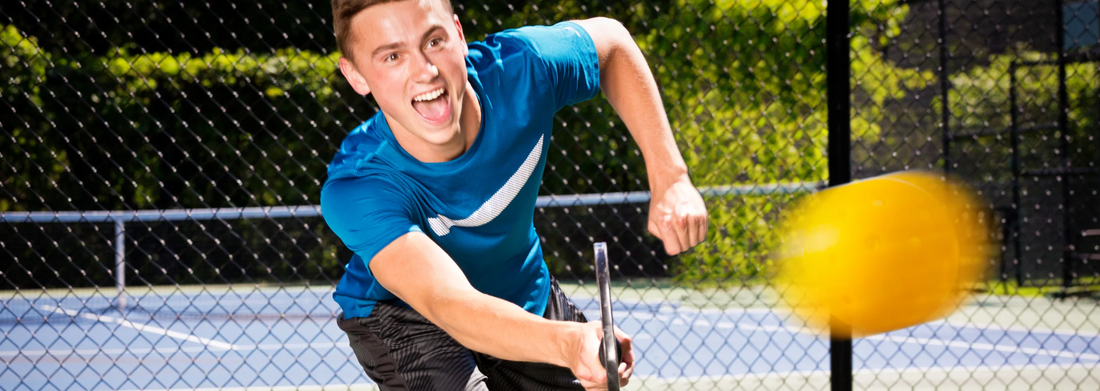
Training Like a Pro: What Elite Pickleball Athletes Do Differently
Share
Pickleball may be accessible to players of all ages and fitness levels, but rising to the top echelon of competition requires more than weekend matches and casual drills. Elite pickleball athletes operate with precision, intention and a level of discipline that often goes unnoticed by recreational players.
So what truly separates a high-level competitor from a club regular? The difference lies not only in skills but also in how the game is approached off the court. From customized training regimens to mental performance strategies, professional pickleball players train with a multidimensional mindset. This article uncovers the uncommon habits and techniques that set them apart.
Structured Practice Over Casual Play
While most players improve simply by playing more games, elite athletes treat every session like a laboratory. Rather than relying solely on matchplay, they craft detailed practice blocks focused on specific skill sets.
What pros prioritize in structured training:
- Third shot drop consistency with variable feeds
- Dinking under pressure with precision placement
- Defensive resets against aggressive drives
- Pattern-based footwork drills for directional recovery
- Point construction with specific shot sequences
Their time on the court is planned and purposeful. They track performance metrics, record sessions for analysis and often use sparring partners or ball machines to replicate high-stress scenarios.
Physical Conditioning for Pickleball-Specific Movement
The best pickleball players are not just technically sound but physically resilient. They recognize that lateral explosiveness, core control and muscular endurance are key to longevity and elite performance.
Common conditioning tactics include:
- Agility ladder routines to enhance foot speed and reaction
- Single-leg balance work for better directional changes
- Rotational core exercises that mimic paddle swing mechanics
- Plyometric training to build fast-twitch response
- Mobility circuits that preserve joint health and prevent injury
Their workouts are not general fitness routines but are tailored around the biomechanics of the sport. Conditioning is no longer optional but integral to every competitive player's daily discipline.
Precision Nutrition and Recovery Rituals
Elite players treat their bodies as performance engines. What they consume and how they recover are as important as how they hit a forehand.
Nutrition philosophies include:
- Strategic macronutrient timing to support energy and muscle repair
- Anti-inflammatory foods to aid recovery from intense training
- Hydration protocols with electrolyte balancing
- Supplementation for joint health and cognitive clarity
Recovery habits often include:
- Daily foam rolling and mobility work
- Contrast baths or cryotherapy to flush muscle fatigue
- Targeted massage or myofascial release
- Sleep optimization routines to improve reaction time and memory consolidation
Where the casual player might ice a sore knee and move on, the professional builds a recovery ecosystem designed to prevent breakdown before it starts.
Mental Toughness: Sharpening the Inner Game
What happens between points can be more influential than what happens during them. Elite pickleball athletes spend considerable time honing their mental game. They understand that composure, adaptability and focus often determine the outcome of tight matches.
Mental tools employed by pros include:
- Visualization drills to rehearse critical moments under pressure
- Self-talk techniques to reset after errors or distractions
- Breathwork to maintain composure during high-adrenaline exchanges
- Pre-match rituals to enter a competitive flow state
- Strategic timeouts to recalibrate and neutralize momentum shifts
The court becomes a chessboard where emotional intelligence is as essential as physical ability.
Tactical Mastery and Adaptability
Elite players don’t just out-hit opponents. They out-think them. They possess a deep understanding of game dynamics and tactical adjustments.
What pros excel at:
- Reading opponents’ tendencies and adjusting mid-match
- Executing deceptive shot selections that mask intent
- Manipulating court positioning to control tempo and angles
- Switching strategies based on paddle spin, weather or court speed
- Synchronizing seamlessly with partners in doubles through pre-established communication systems
This level of adaptability is not learned in spontaneous play but built through film study, strategic coaching and post-match analysis.
Coaching and Feedback Loops
Even the top-ranked players seek external input. Rather than playing in a vacuum, they embrace a continuous feedback cycle.
Elite players often work with:
- Technique coaches for shot refinement
- Sports psychologists for mental fortitude
- Conditioning specialists for injury prevention
- Nutritionists for performance fuel
- Data analysts to break down tendencies and inefficiencies
They crave constructive criticism and constantly re-evaluate their methods. To them, mastery is never a finish line but a moving target.
Conclusion: Mastery Through Multiplicity
While the average pickleball player may believe more games equal more progress, professionals know that excellence requires a multidimensional approach. Technical training is paired with physical preparation, psychological conditioning, and strategic study.
To train like a pro is to step into the realm of intention. It means treating your paddle as an instrument, your mind as a muscle and your routine as a formula. Whether your goal is to compete at the highest level or simply to elevate your personal best, embracing these elite principles will not only sharpen your game but redefine your potential.
Because in the world of pickleball, the real match begins long before the first serve.












